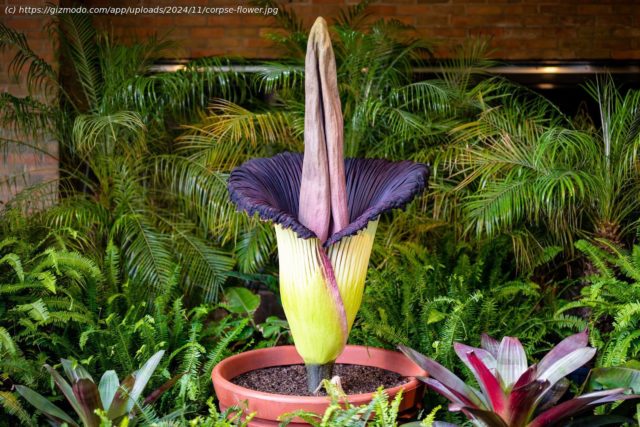Researchers have revealed the genetic and chemical reasons behind the titan arum’s unique warming mechanism and putrid scent.
If you smell a rotting corpse, it could be one of two things: an actual rotting corpse, or—if you’re lucky—just a giant smelly flower called titan arum. Now, scientists have identified the molecular reasons behind this iconic plant’s pungent aroma.
A team led by G. Eric Schaller from Dartmouth College has shed light on the molecular mechanisms that drive titan arum’s stench as well as its warming ability, which gets triggered directly before blooming. A new study, published on November 4 in PNAS Nexus, reveals for the first time that the titan arum contains a chemical called putrescine. Although putrescine is a known compound, this is the first time it’s been identified in the titan arum, where it plays a key role in creating the plant’s distinctive stench.
Appropriately dubbed the “corpse flower,” the titan arum is actually a cluster of tiny flowers within a huge central stalk called the spadix, which can grow up to 12 feet (3.7 meters), according to a Dartmouth College statement. The spike at the top of the spadix is called the appendix. The flowers typically bloom every five to seven years, when a petal-like layer called the spathe unwraps from the bottom of the spadix into a cup-like shape.
Home
United States
USA — software Scientists Discover What Makes the Corpse Flower Produce Its Rotting Flesh Stench






